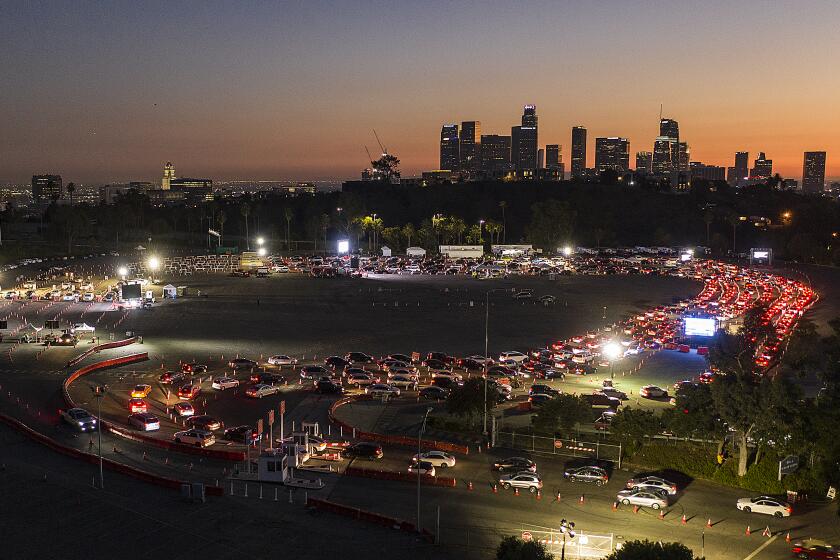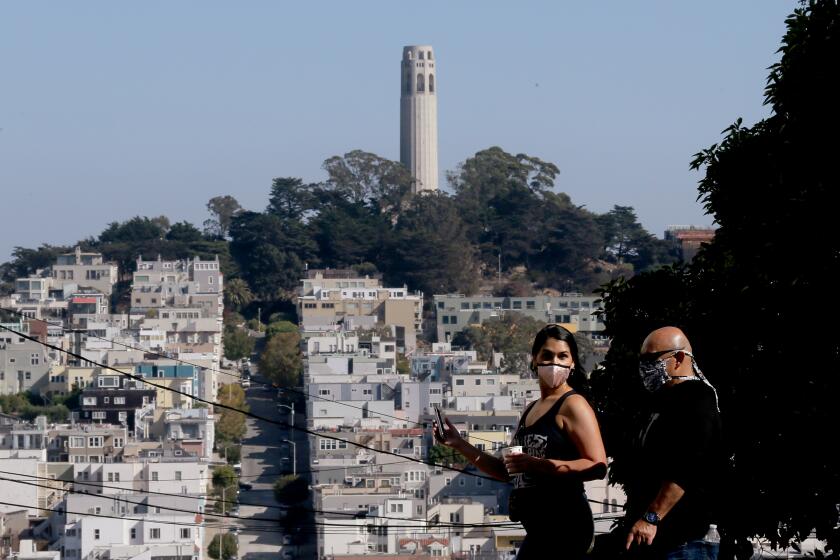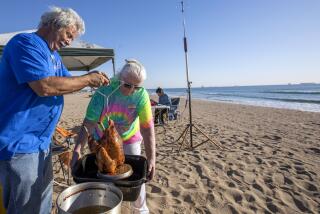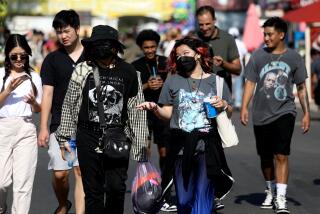Now you can see the COVID-19 risk anywhere in the country, in real time
- Share via
How likely is it you’ll encounter at least one person who is infected with the coronavirus if you go to a bar in Denver? What about a 100-person wedding in Baltimore? Or a Thanksgiving dinner with 25 guests in Los Angeles?
The answers to these questions — and many more — can be found on the free, intuitive and now peer-reviewed COVID-19 Risk Assessment Planning Tool. Built by a team of researchers at Georgia Tech, the tool is designed to help policymakers, event planners and individuals easily grasp the risks associated with gatherings of different sizes throughout the United States and, increasingly, across the world.
(And if you’re curious, as of Monday, you’d have a 78% chance of encountering someone with an active coronavirus infection at the Denver bar, a 68% chance at the wedding in Baltimore, and a roughly 25% chance at the L.A. Thanksgiving meal.)
The COVID-19 Risk Assessment Planning Tool was conceived in March by Joshua Weitz, a quantitative biologist at Georgia Tech who wanted an easy way to quantify the risk of attending events of various sizes in different locations.
The first iteration was a graph that took into account the number of infections per capita in any given county, along with the size of a proposed event. Later, that same information was overlaid on a map to make it even easier for users to understand.
A winter surge of COVID-19 is now unavoidable, experts say, though its magnitude depends on what we do next. Hundreds of thousands of lives hang in the balance.
To find out how likely you are to encounter a coronavirus-infected person at a friend’s white elephant party, for instance, you simply open the tool, move the slider on the left of the map to the number of people you expect to attend (let’s say 15), then hover your cursor over the outline of the county where the event will take place (let’s say Santa Cruz).
The tool will tell you that if the gathering were held today, there is an 8% chance someone will bring the virus along with a pair of novelty socks.
What it can’t tell you, however, is whether an 8% chance of sharing space with someone capable of infecting you is too high to make your attendance worthwhile.
That decision is up to you.
“In a way it’s like a weather map,” said Clio Andris, a professor of city and regional planning and interactive computing at Georgia Tech who helped Weitz build out the tool. “It can tell you what the risk is that it will rain, but it can’t tell you if you’ll get wet. That depends on if you carry an umbrella, or if you choose not to go outside at all.”
The map is updated daily with the latest information on how many cases have been tallied in every county across the U.S. Therefore, an 8% chance of encountering an infected person on Monday could become a 12% risk by Friday.
The tool also assumes that the actual number of coronavirus cases is up to 10 times higher than what’s in the official reports, because not all cases will be caught by tests.
A coronavirus outbreak tied to a wedding reception caused 177 infections and 7 COVID-19 deaths. It shows why health officials are nervous about holiday gatherings.
The COVID-19 Risk Assessment Planning Tool went live in July, and the creators reported that 2 million people had come to the site by September.
In addition to individual users, the research team was contacted by the Georgia Municipal Assn., which represents all the mayors in the state, as well as organizations like the Special Olympics that were using it to assess the risk of holding events.
Andris used the tool herself to decide whether to attend a small party last week. She had been invited to watch the election results with four friends — a gathering of five people total — and was apprehensive because she had not gotten together with that many people outside her household since the shutdown began. After plugging in the parameters, she learned there was a 4% chance that one of the five election-watchers would be infected with the virus and could pass it along to others.
A 4% risk is low but not necessarily low enough to satisfy Andris, who has been extremely cautious since the pandemic began. It wasn’t until she considered that the four other friends were professors like her who mostly lived alone and had not socialized with others much over the last eight months that she decided the risk was acceptable, at least to her. (That’s information no tool can tell you — yet).
Fauci says that, as the coronavirus surges in the U.S., we may have to put off longed-for activities for another year or more.
As we move into the holiday season, Andris said she hoped more people would use the COVID-19 Risk Assessment Planning Tool to help them make decisions about how many local friends and family to invite to their celebrations, and whether traveling to different parts of the country — or even within the same state — is worth the risk.
“I can see a lot of people saying, ‘It’s been a hard year, and we really need to be with friends and family,’” she said. “I get that, and I hear that, but it’s going to have consequences.”










